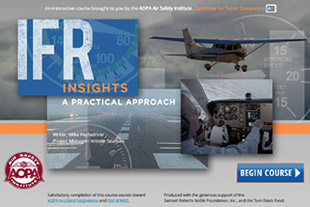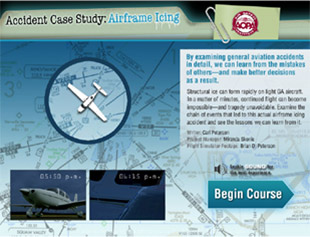Membership News & Notes
Pilot Protection Services: High blood pressure doesn’t require special issuance
Medical certificate may be issued by AME
By Dr. Warren O. Silberman
High blood pressure, or hypertension, hasn’t required a special issuance medical certificate (waiver) for a long time. In recent years, if an airman had another medical condition that required a special issuance and also had a history of hypertension on medications, the FAA would add “hypertension on medications” to the special issuance letter.
Around March 2013, the FAA created the Conditions AMEs Can Issue (CACI) category of medical conditions and included hypertension. The category comprises conditions that require airmen to bring some documentation to the aviation medical examiner at each examination for medical certificate renewal. As long as the information fulfills the criteria in the CACI worksheets, the AME can issue an unrestricted medical certificate.
An airman with hypertension who is reporting the condition to the AME for the first time must provide a letter from the treating physician that informs the FAA when the diagnosis of hypertension was made and contains a comment about significant personal and family history, such as a history of heart disease or stroke; a listing of the medications that the airman is taking for the blood pressure; the dosage and frequency of use of each medication; and a mention of any adverse side effects.
The letter also should note a couple of blood pressure results taken after the airman has been on the medication or medications.
As long as the airman has no effects of hypertension, has been on the medications for at least two weeks without significant side effects, and the blood pressure in the AME’s office is less than 155/95, then the AME may issue a medical certificate if the airman is otherwise qualified. The AME does not have to send the records to the FAA, but should maintain them in his or her office records.
For subsequent examinations, the treating physician need only write a letter that informs the FAA how the airman has been doing since the last exam; lists current medications and side effects, if any; and notes blood pressure readings in the office.
Dr. Warren O. Silberman is the former manager of FAA Aerospace Medical Certification and a doctor of osteopathic medicine. A pilot since 1986, he is recognized nationally as an expert in aerospace/preventive medicine.
Survey: 21,000 AOPA members have signed the association’s medical reform petition
AOPA Foundation
The AOPA Foundation relies on donations to preserve our freedom to fly, and together we can make a difference. Join other AOPA member philanthropists who have funded AOPA Foundation initiatives this year.
Air Safety Institute
Inside the IFR system
Take a practical approach to instrument flying
 During instrument training, we learn to fly within precise parameters—an essential skill to successfully operate in instrument meteorological conditions (IMC). But wouldn’t it be nice to also have some real-world techniques and procedures at our fingertips that can help reduce our workload when flying in IMC?
During instrument training, we learn to fly within precise parameters—an essential skill to successfully operate in instrument meteorological conditions (IMC). But wouldn’t it be nice to also have some real-world techniques and procedures at our fingertips that can help reduce our workload when flying in IMC?
Get ready to expand your IFR airmanship beyond the usual textbook limitations with the AOPA Air Safety Institute’s fourth course in the IFR Insights series. IFR Insights: A Practical Approach shares some of the finer points of flying safely and efficiently in the IFR system. Not only will you discover practices used by seasoned pilots, instructors, and air traffic controllers, but the course—which is optimized for tablet computers—also discusses the practical side of staying ahead of the airplane, effectively communicating with ATC, and how and when to make the best use of departure procedures.
Whether you’re new to instrument flying or a veteran instrument pilot, enjoy tips on flying instrument approaches and planning for contingencies such as changing weather and ATC delays—and glean important insight into how to manage emergencies in IMC. Course completion qualifies for AOPA Accident Forgiveness and FAA Wings program credit.
The course is made possible by the generous support of the Samuel Roberts Noble Foundation Inc. and the Tom Davis Fund.
Shake off the rust, return to the sky
Whether it’s been quite some time or only a short hiatus since your last flight, the Air Safety Institute’s Rusty Pilots Safety Spotlight provides a convenient way to get you back into the left seat.
This new spotlight brings together pertinent courses, videos, and publications that help plug any knowledge gaps and get you ready for flying again. Brush up on talking on the radio, refresh your aerodynamics knowledge, and delve deeper into today’s airspace structure. Then, test your knowledge with a number of quizzes to solidify what you’ve learned. Before you know it, you’ll be ready to schedule the flight review with your instructor.
 Beware the perils of airframe icing
Beware the perils of airframe icing
The unrelenting power of structural icing is one of the greatest hazards of winter flying for general aviation aircraft because it can accumulate quickly, decrease lift, and increase drag to the point where continued flight is impossible.
Accident Case Study: Airframe Icing offers a glimpse into the cockpit of a Cirrus SR22 as its pilot struggles to escape ice-filled clouds high above the Sierra Nevada. The case study stresses the importance of decisive action for pilots who venture unprepared into cold winter clouds, and it highlights the critical, lifesaving role that pilot reports can play when unforecast weather appears. Even if our aircraft are equipped with ice-protection systems, we should understand system limitations and have a Plan B that will untangle us from unforeseen airframe icing.
As you’ll learn from this accident, once an icing encounter occurs, every second counts. We must tell ATC that we need an immediate climb, descent, or turn—and be clear that our situation is urgent.
Products and Services
AOPA Aviation Finance
Maximize your deductions at tax time
Benefits of aircraft ownership
Among the many reasons to buy an airplane are the tax advantages of owning an airplane.
The best tax advice comes from your own tax professional, but the advantages cited here may help you guide the discussion at tax time.
If your business is the owner of an aircraft, you are entitled to modified accelerated cost recovery system (MACRS) depreciation, which allows you to deduct greater amounts during the first few years of aircraft ownership. There’s a lot of fine print—but as an aircraft owner, it’s likely that MACRS affects you positively.
Some of the expenses associated with aircraft ownership and usage are deductible as part of a business’s operating deductions. If you own your aircraft as an individual, you may still benefit from these deductions when your aircraft is used in pursuit of business.
You also should understand other legal and financial issues that can affect you. For example, forming a limited liability company as the legal owner of your personal airplane can protect you in a liability situation, even though there are no particular tax advantages.
Call 800-62-PLANE (800-627-5263) to speak with AOPA Aviation Finance staff. Or, email [email protected] to begin the application process today.
The information in this article should not be relied upon as legal or financial advice. For the specific tax advantages for you, consult an aviation-savvy lawyer and tax professional who will be able to provide you with advice tailored to your state, regulatory requirements, and personal circumstances.
Answers for pilots
Caribbean dreamin’ on such a winter’s day?
What could be better in the snowy months than heading south to dig your toes in the Caribbean sand? The islands offer many general aviation-friendly destinations and warm weather year-round. Although the lifestyle may be laid back, the flight planning shouldn’t be. Procedures differ among the many countries that govern the islands, so decide in advance where you want to visit. Find out more about the requirements for your winter getaway in December’s Answers for Pilots online.
AOPA insurance services
Four things to consider when switching jobs
Benefit checklist for pilots, aviation enthusiasts
Whether you fly professionally or recreationally, there is a lot to consider when moving on to a new job. Take a good look at your existing company benefits to know what you can take with you and what you’ll leave behind.
Health insurance
Health insurance is one of your most important company benefits. Before taking a new job, ask about the benefits and how much you’ll be required to contribute. Ask, too, if the doctors you trust will accept your new plan.
Don’t assume you’ll be covered on your first day. If not, ask your current employer if you can extend your existing benefits. You may need gap coverage. You may sign up for a temporary COBRA plan or purchase a policy through your local broker on the health-care exchange. If married, switching to your spouse’s plan may be an option.
Retirement plans
Although tempting, withdrawing your money from a 401(k) or pension plan when you change jobs may subject you to income tax and early withdrawal penalties. Other options are to leave your money in your old plan, roll it into an individual retirement account, or move it to your new employer’s plan.
If you’ve taken a loan against your company plan, your entire balance may have to be repaid within 60 days. Talk to your human resources department or plan administrator about your situation.
Some employers won’t contribute to your retirement plan if you’re not employed on the last day of the year. You also may not be able to contribute to your new employer’s plan right away, or have to wait a few years to be vested. If you are in a position to bargain, negotiate with a prospective employer to make up for lost benefits.
Paid time off
Many states require employers to pay employees for accrued vacation time when they leave a job. Check your state’s bureau of labor and your employee handbook to see what you’re entitled to.
Life insurance benefits
Like most employee benefits, any life insurance your employer provides is not yours to keep. The only way to be sure your family will be protected is to purchase a policy on your own. It makes sense to buy that coverage now. If you wait, your age and any changes to your health may make it difficult or cost-prohibitive. Your AOPA membership gives you access to up to $1 million in benefits, for you and your spouse, in the Group Term Life Insurance Plan.

